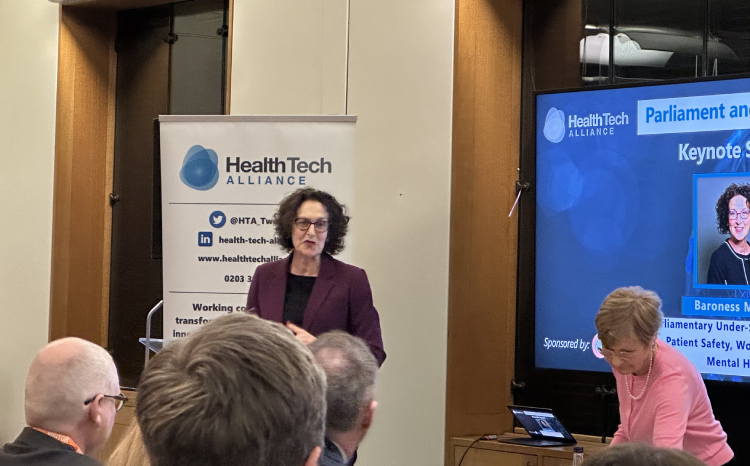Legal view: of thinking small on procurement
- 17 March 2016

Are small or medium enterprises underrepresented in NHS procurement, compared to their overall weight in the UK digital economy?
Some would argue that procurement in the public sector has “conspired” to exclude SME suppliers: entrenched systems integrators, unspecified project aims, the requirement to fill out telephone directory sized paper work, and challenging technical and financial qualification requirements are all cited as barriers to entry.
Of course, some of these barriers have been born out of the NHS’ need to ensure legislative compliance in procurement.
So how can the NHS demonstrate that it does allow SMEs to take part in the delivery of public contracts to supply information technology?
No positive discrimination in the rules
As explained in an earlier column for Digital Health, public procurement legislation (primarily in the form of The Public Contracts Regulations 2015 or "PCR 2015") is characterised by a requirement that awards are advertised to the market (in contract notices) if they exceed certain threshold values (for NHS foundation trusts this is currently £164,176 for technology procurement).
Other key features of the rules include: the application of procedures defined by legislation, with associated time limits; the application of pre-determined fair criteria to any shortlisting of potential tenders; and the adoption of a procurement approach that is fair and non-discriminatory.
There are no legislative requirements requiring explicit, positive discrimination in favour of small business in public sector procurement. However, some rules are designed to level the playing field for SMEs.
Preliminary market consultations are now expressly recognised in the PCR 2015 (Regulation 40) as a way to achieve efficiency and to help procuring public bodies (or “contracting authorities” in its language) engage with potential suppliers earlier in the procurement process.
This should give SMEs the opportunity to better understand the requirements of the contracting authorities, de-risking potential opportunities (which may include the SME’s decision to bid in the first place).
The PCR 2015 also gives the option to award a contract in separate lots. The lot based approach in effect allows a contracting authority to carve up the procurement into a number of smaller chunks.
This should make it more accessible to SMEs, particularly if they can only fulfil the requirements of one lot and not the whole procurement.
The PCR 2015 is designed to encourage contracting authorities to consider this approach, by compelling them to record their decision not to sub-divide into lots in the relevant procurement documents (Regulation 84) (although, in practice, the freedom of contracting authorities in that respect is fairly wide).
But some changes to contracting regulations may help
Regulation 58 of PCR 2015 now limits the maximum turnover requirements that contracting authorities may set to select a bidder at the pre-selection stage to a maximum of twice the relevant contract value; except where, due to particular risks, a greater turnover requirement is justified (Regulation 58(9)). High turnover requirements used to be a key barrier to entry.
The PCR 2015 also includes some UK specific requirements for advertising contracts. Contracting authorities must ensure that when they advertise a new procurement opportunity (whether by issuing an EU contract notice or otherwise) which is above a certain threshold (in relation to sub-central contracting authorities or NHS trusts above £25,000), that the advert is placed on the new national Contracts Finder portal (Regulation 106/110).
Authorities must subsequently ensure that contract award information is placed on Contracts Finder once the contract is awarded. This of course should assist in transparency and make it easier for SMEs to seek out opportunities.
Since the introduction of the PCR 2015 last year, contracting authorities have been obliged to use the Crown Commercial Service standard pre-qualification questionnaire (Regulation 107(1)).
However, with effect from 26 January this year, contracting authorities are required to accept a European Single Procurement Document from bidders if they receive one.
An ESPD effectively enables bidders to self-declare that none of the grounds for exclusion apply to them and that they meet the relevant selection criteria (the successful bidder will then be required to submit all documentation to evidence this).
At the time of writing this article, further guidance is expected from the Crown Commercial Service as to how the requirement to accept an ESPD fits in with their standard questionnaire. In the end, though, such standardisation should simplify the qualification process and reduce the administrative burden for both contracting authorities and bidders.
Other avenues for SMEs to pursue
Aside from the possible opportunities created by the current rules, what strategies can be employed by SMEs to make sure that they can take part in the procurements?
Opportunities may present themselves to SMEs in the form of lower value procurements (sub-thresholds) in relation to which contracting authorities have more freedom in terms of how they conduct the process.
SMEs should take advantage of such procurements to build a portfolio of experience working with the NHS, as this in turn may open doors to larger procurements.
An important way in which SMEs can participate in larger value procurements is as a member of a consortium or other joint bid arrangement and therefore as a subcontractor or as a generic supplier not named as subcontractor (although this may be their role).
This is a common route in for many smaller vendors with offers that range from data migration services to software with specialist use.
This means picking partners and forming ‘best friend’ relationships with larger or more established NHS suppliers, who are likely to be short listed. Niche expertise and experience of working with the NHS is likely to matter in forming alliances.
In short, it appears there is no sign of the policy of the decentralised approach to the procurement of most systems in the NHS changing in the near future, and therefore the outlook for potential opportunities for small business within the sector ought to be positive.

  |
Andrew Rankin and Carole PolettiAndrew Rankin is an Associate and Carole Poletti is a solicitor at DAC Beachcroft LLP. Andrew and Carole specialise in advising public sector and private sector clients in all aspects of buying, supplying, delivering and using technology in healthcare. |
 |




